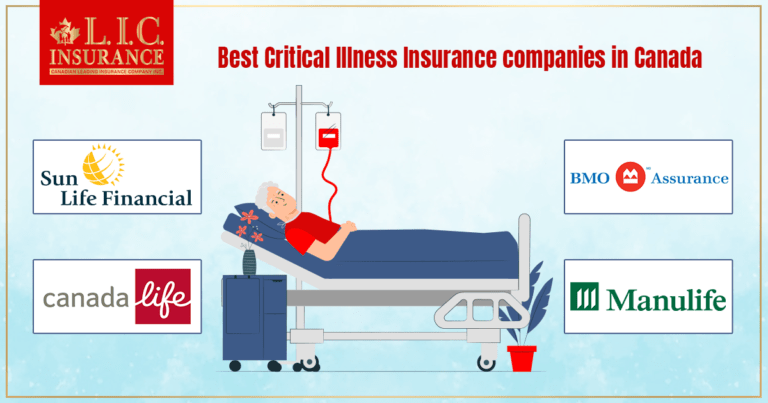What Is RRSP & Reasons to Make RRSP Investments?
By Harpreet Puri,October 19, 2023, 8 Minutes
- What Is RRSP & Reasons to Make RRSP Investments?
- Understanding RRSPsa>
- How to set up an RRSP?
- When can I withdraw my RRSP?a>
- Do you have to live in Canada to contribute to RRSP?
- What happens to an RRSP if you leave Canada?
- Can you withdraw from RRSP from outside Canada?
- How to claim your RRSP deduction
- RRSP Contribution Limits
- Reasons to Make RRSP Investments
- Summary

When it comes to planning for a secure and comfortable retirement, Canadians have a valuable tool at their disposal: the Registered Retirement Savings Plan, or RRSP. RRSPs are a cornerstone of the Canadian retirement savings landscape, offering numerous benefits and incentives for individuals to save and invest for their golden years. So, let us understand what an RRSP is and the compelling reasons why investing in RRSPs should be an essential part of your financial plan.
Understanding RRSPs
A Registered Retirement Savings Plan (RRSP) is a government-approved tax-advantaged account designed to help Canadians save for their retirement. It allows individuals to contribute a portion of their income to the plan, reducing their taxable income for the year of contribution. The funds within the RRSP can then be invested in a wide range of financial instruments, such as stocks, bonds, mutual funds, Guaranteed Investment Certificates (GICs), and more. These investments grow tax-deferred until they are withdrawn during retirement.
Read More – Information on RRSP’s
How to set up an RRSP?
Setting up a Registered Retirement Savings Plan (RRSP) in Canada involves several simple steps. Here’s a guide to help you get started:
Check Your Eligibility:
Ensure that you meet the eligibility criteria for an RRSP, including being a Canadian resident for tax purposes, having earned income, and being within the contribution age limits.
Choose an RRSP Provider:
Decide where you want to open your RRSP. You can choose from banks, credit unions, investment firms, mutual fund companies, insurance companies, or online brokerages. Research and compare fees, investment options, and customer service to find the provider that suits your needs.
Gather Required Documents:
You will need your Social Insurance Number (SIN) and other personal identification documents to set up your RRSP.
Open Your RRSP Account:
Contact your chosen RRSP provider and request to open an RRSP account. You can typically do this online, over the phone, or in person at a branch or office.
Choose Your Investments:
Once your RRSP account is open, you’ll need to decide how to invest your contributions. RRSPs offer a wide range of investment options, including stocks, bonds, mutual funds, Guaranteed Investment Certificates (GICs), and more. Your choice should align with your risk tolerance and long-term financial goals.
Set Up Contributions:
Determine how much you want to contribute to your RRSP and how frequently. You can make one-time lump-sum contributions or set up automatic contributions. Be mindful of your annual RRSP contribution limit, which is determined by your previous year’s earned income and reported on your Notice of Assessment from the Canada Revenue Agency (CRA).
Monitor and Adjust:
Regularly review your RRSP investments to ensure they align with your financial goals and risk tolerance. Adjust your portfolio as needed over time.
Maximize Tax Benefits:
Keep track of your RRSP contributions to maximize tax deductions. Ensure that you contribute to your RRSP before the annual deadline, typically March 1st of the following year (often referred to as the “RRSP deadline”), to claim deductions on your tax return for the current year.
Plan for Retirement Withdrawals:
As you approach retirement, consider your withdrawal strategy. You can choose to convert your RRSP into a Registered Retirement Income Fund (RRIF) or purchase an annuity to receive regular income during retirement. Be aware that mandatory RRIF withdrawals begin at age 72.
Stay Informed:
Keep yourself informed about changes in RRSP rules and contribution limits, as these may evolve over time. Consult with a financial advisor like Canadain LIC for personalized guidance on your RRSP and retirement planning.
Remember that RRSPs are designed for long-term retirement savings, and early withdrawals may result in tax consequences and the loss of contribution room. Consult with Canadian LIC today to ensure that your RRSP strategy aligns with your financial goals and overall retirement plan.
When can I withdraw my RRSP?
In Canada, you can withdraw funds from your Registered Retirement Savings Plan (RRSP) under certain circumstances. However, some specific rules and considerations govern when and how you can make withdrawals:
Age 71: The latest age at which you can hold an RRSP is 71. By the end of the year in which you turn 71, you must convert your RRSP into an income-producing vehicle. You have several options:
Registered Retirement Income Fund (RRIF): You can transfer your RRSP funds into an RRIF, which provides you with regular, taxable income. There are mandatory annual minimum withdrawals from an RRIF, and these minimums are determined based on your age.
Life Annuity: You can use your RRSP to purchase a life annuity from a financial institution. The annuity will provide you with regular payments for life, regardless of how long you live. Note that annuity payments are generally taxable.
Lump-Sum Withdrawal: You can choose to withdraw all the funds in your RRSP as a lump sum. However, this option will result in significant tax consequences, as the full withdrawal will be treated as taxable income in the year it is taken.
Home Buyers’ Plan (HBP): You can withdraw up to $35,000 from your RRSP to use as a down payment on your first home through the Home Buyers’ Plan (HBP). This withdrawal must be repaid to your RRSP over a 15-year period to avoid tax penalties.
Lifelong Learning Plan (LLP): Under the Lifelong Learning Plan (LLP), you can withdraw up to $20,000 from your RRSP to finance eligible educational expenses for yourself or your spouse or common-law partner. Like the HBP, the amount must be repaid over time.
Financial Hardship: In cases of severe financial hardship, you may be able to make early withdrawals from your RRSP through the Home Buyers’ Plan (HBP) or Lifelong Learning Plan (LLP), even if you don’t meet the usual criteria. Consult the CRA for specific guidelines.
It’s important to note that withdrawals from your RRSP are generally considered taxable income in the year you make the withdrawal. This means that you’ll need to include the withdrawal amount on your income tax return and pay any applicable taxes. However, some exceptions apply, such as withdrawals made under the HBP or LLP, which are not subject to withholding tax.
Before making any RRSP withdrawals, it’s advisable to consult with Canadian LIC to understand the tax implications, withdrawal limits, and repayment requirements associated with your specific situation. Proper planning can help you make informed decisions about when and how to access your RRSP savings while optimizing your retirement income and minimizing tax liabilities.
Do you have to live in Canada to contribute to RRSP?
No, you do not have to live in Canada to contribute to an RRSP (Registered Retirement Savings Plan). The primary eligibility requirement for contributing to an RRSP is that you must have eligible earned income in Canada. Earned income includes various types of income derived from employment, self-employment, rental income, and specific other sources.
Here are some key points to consider regarding RRSP contributions for non-residents:
Eligible Earned Income: To contribute to an RRSP, you must have eligible earned income in Canada. Passive income, such as investment earnings or rental income from outside Canada, does not count as earned income for RRSP contribution purposes.
Unused Contribution Room: If you were a Canadian resident in previous years and accumulated an RRSP contribution room but are now a non-resident, you can still use your unused contribution room to make contributions when you return to Canada as a resident.
Tax Deductibility: Contributions made while you are a non-resident may not be tax-deductible in Canada since you may not have Canadian taxable income against which to claim the deduction. However, if you return to Canada and become a resident, you can carry forward your contributions and claim the deduction in future years when you have taxable income.
Overcontributions: Be cautious not to overcontribute your RRSP, as this can result in penalties. The Canada Revenue Agency (CRA) allows a lifetime overcontribution limit of $2,000 without penalties, but any excess contributions may be subject to a 1% per month penalty tax.
Tax Treaty Considerations: Depending on your country of residence, you should also consider any tax treaties between Canada and your country, as they may impact the taxation of your RRSP contributions and withdrawals.
Consult with a Tax Professional: Given the complexity of tax laws and the potential implications of RRSP contributions for non-residents, it’s advisable to consult with a professional or advisor like Canadian LIC to ensure that you meet all legal requirements and make informed decisions regarding your RRSP.
Non-residents who have eligible earned income in Canada can contribute to an RRSP, but there may be tax implications and limitations to consider. Consulting with a tax professional is recommended to navigate the complexities of RRSP contributions as a non-resident and to ensure compliance with Canadian tax laws.
What happens to an RRSP if you leave Canada?
If you leave Canada permanently or become a non-resident for tax purposes, your Registered Retirement Savings Plan (RRSP) does not need to be closed, but it will undergo specific tax and reporting changes. Here’s what happens to your RRSP when you leave Canada:
Tax Implications:
As a non-resident of Canada, you will be subject to a 25% withholding tax on most RRSP withdrawals, including both lump-sum withdrawals and periodic payments. This withholding tax is applied to ensure that non-residents pay their Canadian tax liability upfront when they access their RRSP funds.
No New Contributions:
Once you are no longer a Canadian resident, you generally cannot contribute to your existing RRSP. Contributions made by non-residents may not be tax-deductible in Canada.
Reporting to the CRA:
When you become a non-resident, you are required to notify the Canada Revenue Agency (CRA) of your change in residency status by filing a departure tax return. This return helps determine your final tax obligations, including any taxes owed on the deemed disposition of certain assets, such as real estate and some investments.
Options for RRSP Funds:
You have several options for your RRSP funds when you leave Canada:
Leave the RRSP Intact: You can leave your RRSP intact and continue to manage your investments from abroad. You will be subject to withholding tax on withdrawals.
Convert to a Registered Retirement Income Fund (RRIF): If you are over the age of 71, you can convert your RRSP into an RRIF and receive regular, taxable withdrawals. Withholding tax applies.
De-register and Withdraw: You can choose to de-register your RRSP and withdraw the funds. Withholding tax will apply, and you may have tax obligations in your new country of residence.
Reporting to Foreign Tax Authorities: Depending on your new country of residence, you may need to report your RRSP and its income to tax authorities in that country. Tax treaties between Canada and your new country of residence can affect the taxation of RRSP withdrawals.
Consult with a Tax Advisor: It’s highly advisable to consult with a tax advisor who is knowledgeable about cross-border tax issues when leaving Canada. They can help you navigate the tax implications, consider the tax treaties in place, and make informed decisions regarding your RRSP and other financial assets.
Remember that the rules and tax treatment of RRSPs for non-residents may change over time, so it’s essential to stay updated on the latest regulations and consult with a tax professional to ensure compliance with tax laws in Canada and your new country of residence.
Get The Best Insurance Quote From Canadian L.I.C
Call 1 844-542-4678 to speak to our advisors.

Can you withdraw from RRSP from outside Canada?
Yes, you can withdraw funds from your Registered Retirement Savings Plan (RRSP) from outside Canada. However, there are specific rules and tax considerations to keep in mind when making RRSP withdrawals while residing outside of Canada:
- Withholding Tax: When you make RRSP withdrawals as a non-resident of Canada, the financial institution holding your RRSP is required to withhold a 25% non-resident withholding tax on the gross amount of the withdrawal. This withholding tax is intended to cover any Canadian tax liability associated with the withdrawal. The withheld amount is remitted to the Canada Revenue Agency (CRA).
- Income Reporting: RRSP withdrawals made while residing outside Canada must be reported on your Canadian income tax return. The withheld tax is credited against any Canadian income tax you owe. Depending on your overall Canadian tax liability, you may be entitled to a refund or may have additional tax obligations.
- Tax Treaty Considerations: Canada has tax treaties with many countries that may impact the withholding tax rate and tax treatment of RRSP withdrawals for residents of those countries. The specific terms of the tax treaty between Canada and your country of residence can affect the withholding tax rate and any potential tax credits or exemptions. Consult the tax treaty or a tax professional for guidance.
- Foreign Tax Implications: You should also consider the tax implications of your RRSP withdrawals in your country of residence. Some countries may tax RRSP withdrawals differently, and it’s essential to understand your tax obligations in your new country.
- Currency Exchange: When you withdraw funds from your RRSP from outside Canada, the amount will be converted to your new country’s currency. Exchange rates can impact the value of your withdrawal.
- Penalties and Tax Reporting: Ensure that you comply with both Canadian and foreign tax reporting requirements related to your RRSP withdrawals. Failure to do so could result in penalties or tax liabilities.
- Tax Professional Guidance: Given the complexity of cross-border tax issues, it is highly recommended to consult with a tax professional who is knowledgeable about the tax laws in both Canada and your new country of residence. They can help you navigate the tax implications, ensure compliance with tax regulations, and optimize your financial decisions.
You can withdraw funds from your RRSP from outside Canada, but there are withholding tax obligations and tax considerations to address. Consult with a tax professional to understand the specific tax treatment, reporting requirements, and potential tax implications associated with your RRSP withdrawals based on your unique situation.
How to claim your RRSP deduction
Claiming your RRSP (Registered Retirement Savings Plan) deduction in Canada involves several steps, and it’s essential to ensure accurate reporting to maximize your tax benefits. Here’s how to claim your RRSP deduction:
Determine Your RRSP Contribution Room:
Review your most recent Notice of Assessment from the Canada Revenue Agency (CRA) to determine your available RRSP contribution room for the tax year. Your contribution room is based on your earned income and unused contribution room from previous years.
Contribute to Your RRSP:
Make eligible contributions to your RRSP account before the annual RRSP contribution deadline, which is typically March 1st of the following year (e.g., contributions for the 2022 tax year must be made by March 1, 2023). You can contribute to your RRSP at any time during the year, but contributions made within the first 60 days of the new year can be claimed as a deduction for the previous tax year.
Keep Records:
Maintain detailed records of your RRSP contributions, including contribution amounts, dates, and the financial institution where you made the contributions.
File Your Tax Return:
Complete your income tax return for the tax year in which you made RRSP contributions. You can file your return online or on paper.
Report RRSP Contributions:
On your tax return, report your RRSP contributions in the appropriate section. In the case of paper returns, use Schedule 7, “RRSP and PRPP Unused Contributions, Transfers, and HBP or LLP Activities,” to calculate your allowable RRSP deduction.
Calculate Your Deduction Limit:
Calculate the amount of your RRSP deduction limit for the year. This limit is generally 18% of your previous year’s earned income, up to a maximum limit set by the CRA. You can find this limit on your Notice of Assessment or by using the CRA’s My Account online service.
Claim the Deduction:
On your tax return, enter the amount you want to claim as an RRSP deduction up to your RRSP deduction limit for the year. The deduction reduces your taxable income for the tax year, potentially resulting in a lower tax liability or a tax refund.
Verify the Claim:
Carefully review your tax return to ensure that you’ve correctly claimed your RRSP deduction. Double-check your calculations and make sure you haven’t exceeded your deduction limit.
Submit Your Tax Return:
If you’re filing your return electronically, follow the submission process for your chosen tax preparation software or service. If you’re filing a paper return, mail it to the appropriate CRA tax center.
Receive Your Notice of Assessment:
After the CRA processes your tax return, you will receive a Notice of Assessment, which confirms the amount of your RRSP deduction and any changes made to your return. Keep this document for your records.
Don’t forget that claiming an RRSP deduction reduces your taxable income for the year, potentially resulting in a tax refund. It’s crucial to stay within your RRSP contribution limit to avoid penalties and to ensure that you’re making the most of your retirement savings. If you have complex financial situations or questions about your RRSP deductions, consider seeking advice from Canadian LIC today!
RRSP Contribution Limits
Your RRSP contribution limit is determined by a combination of factors, including your earned income, previous contributions, and the annual contribution limits set by the Canada Revenue Agency (CRA). Here are the key points to know about RRSP contribution limits:
- Your RRSP contribution limit is based on 18% of your earned income from the previous year up to a specified maximum limit set by the CRA.
- Contribution limits are subject to annual adjustments based on changes in the cost of living.
- You can find your RRSP contribution limit on your Notice of Assessment from the CRA or by logging into your CRA account online.
- If you have unused contribution room from previous years, you can carry it forward and make larger contributions in the future.
- Overcontributing your RRSP can result in penalties, so it’s essential to stay within your contribution limit.
Get The Best Insurance Quote From Canadian L.I.C
Call 1 844-542-4678 to speak to our advisors.
Reasons to Make RRSP Investments
Now, finally, after finding out so much about RRSPs, let’s delve into the compelling reasons why making RRSP investments should be a priority in your financial planning:
Tax Advantages
One of the most significant benefits of RRSP investments is the potential for immediate tax savings. When you contribute to your RRSP, the amount is deducted from your taxable income for that year. This can lead to a lower tax bill or even result in a tax refund, depending on your overall financial situation. By strategically maximizing your RRSP contributions, you can optimize your tax savings.
Tax-Deferred Growth
Inside your RRSP, your investments grow tax-deferred. This means that you won’t pay taxes on the capital gains, interest income, dividends, or other earnings generated by your investments until you withdraw the funds. This tax-deferral strategy can lead to significant long-term savings and allows your investments to compound more efficiently over time.
Supplementing Pension Income
RRSPs play a crucial role in supplementing pension income during retirement. For individuals who have employer-sponsored pension plans or government pensions like the Canada Pension Plan (CPP) and Old Age Security (OAS), RRSPs provide an additional source of retirement income. This supplementary income can help you maintain your desired lifestyle and cover expenses in retirement.
Retirement Planning Flexibility
RRSPs offer flexibility in retirement planning. You can choose when and how you want to receive income from your RRSP. Whether you convert it into a Registered Retirement Income Fund (RRIF), purchase an annuity, or take periodic withdrawals, you have options to structure your retirement income in a way that suits your financial goals and circumstances.
Income Splitting
Spousal RRSPs allow for income splitting in retirement. By contributing to a Spousal RRSP, you can provide your spouse or common-law partner with retirement income. This strategy can help equalize your retirement income and potentially reduce your overall tax liability in retirement.
Homeownership
The Home Buyers’ Plan (HBP) enables first-time homebuyers to withdraw up to $35,000 (or $70,000 for a couple) from their RRSP to use as a down payment on a home. This provision provides a tax-efficient way to fund your first home purchase while maintaining the long-term savings aspect of your RRSP.
Lifelong Contributions
Unlike other savings accounts, there is no age limit for contributing to an RRSP. As long as you have earned income, you can continue to contribute to your RRSP, even after the age of 71. This feature allows you to extend your retirement savings and optimize your financial security in your later years.
Asset Diversification
RRSPs offer a wide range of investment options, allowing you to diversify your portfolio to align with your risk tolerance and investment goals. You can hold various asset classes within your RRSP, including stocks, bonds, mutual funds, GICs, and more, creating a well-balanced investment strategy.
Catching Up on Retirement Savings
If you haven’t prioritized retirement savings earlier in your career, RRSPs offer a valuable opportunity to catch up. The contribution room accumulates over the years, allowing you to make larger contributions as your financial situation improves.
Professional Guidance
Navigating the complexities of RRSP investments can be challenging, especially when considering factors like asset allocation, investment selection, and retirement income planning. Seeking professional advice from a financial advisor or planner can help you make informed decisions, create a personalized retirement strategy, and maximize the benefits of your RRSP.
Summary
Registered Retirement Savings Plans (RRSPs) are a powerful tool for Canadians to save and invest for retirement while enjoying significant tax advantages and financial flexibility. By making RRSP investments a central part of your financial plan, you can benefit from immediate tax savings, tax-deferred growth, and a reliable source of retirement income. Whether you’re looking to reduce your current tax liability, supplement pension income, or achieve long-term financial security, RRSPs offer a comprehensive solution for your retirement needs. To make the most of your RRSP investments, schedule a meeting with Canadian LIC today, as they can provide personalized guidance and help you navigate the intricacies of retirement planning in Canada.
The above information is only meant to be informative. It comes from Canadian LIC’s own opinions, which can change at any time. This material is not meant to be financial or legal advice, and it should not be interpreted as such. If someone decides to act on the information on this page, Canadian LIC is not responsible for what happens. Every attempt is made to provide accurate and up-to-date information on Canadian LIC. Some of the terms, conditions, limitations, exclusions, termination, and other parts of the policies mentioned above may not be included, which may be important to the policy choice. For full details, please refer to the actual policy documents. If there is any disagreement, the language in the actual policy documents will be used. All rights reserved.
Please let us know if there is anything that should be updated, removed, or corrected from this article. Send an email to [email protected] or [email protected]







